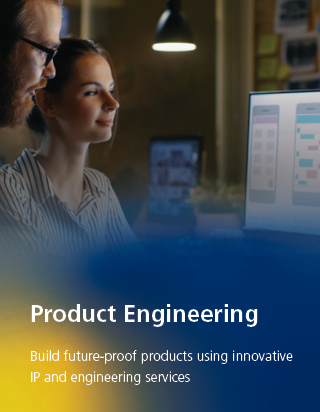Boost Your Project with Specialist Engineering Support: Topographical Surveying, Building Studies, and Beyond
Boost Your Project with Specialist Engineering Support: Topographical Surveying, Building Studies, and Beyond
Blog Article
Making The Most Of Resource Allocation Through Strategic Surveying Practices
In the world of critical source allowance, the method of checking stands as a critical device for companies aiming to optimize their performance and effect. By systematically gathering information and insights, strategic evaluating methods provide a roadmap for informed decision-making and source distribution.
Importance of Strategic Checking Practices
Strategic evaluating techniques play a crucial duty in figuring out the efficient allowance of resources within companies. By carrying out strategic surveys, firms can gather beneficial data and understandings that help in making educated decisions concerning the allocation of resources such as time, workforce, and budget. These practices give an organized approach to understanding the existing state of the company, determining areas for enhancement, and lining up resources with tactical objectives.
One crucial relevance of strategic surveying techniques is that they assist companies prioritize their campaigns based on real-time comments from stakeholders. This makes certain that resources are guided towards tasks or tasks that have the highest effect on attaining business purposes. Furthermore, critical surveys enable business to adjust to transforming market problems, consumer preferences, and internal capabilities by continually examining and keeping an eye on source appropriation approaches.
Event Insights From Stakeholders
Integrating feedback from stakeholders is important for organizations implementing strategic surveying techniques to successfully designate sources and drive decision-making procedures. Stakeholders, including employees, customers, suppliers, and area participants, hold important insights that can significantly influence the success of critical efforts. setting out engineer services. Involving with stakeholders with surveys, meetings, emphasis teams, and responses sessions enables organizations to obtain a much deeper understanding of their choices, issues, and demands
By collecting insights from stakeholders, organizations can identify crucial areas for enhancement, prioritize resource appropriation based on actual requirements, and align strategic goals with stakeholder assumptions. Furthermore, entailing stakeholders in the decision-making procedure cultivates a sense of possession and dedication, causing enhanced buy-in and support for tactical campaigns.
Additionally, stakeholders typically supply distinct point of views and cutting-edge ideas that might not have been taken into consideration internally. By actively listening to and including stakeholder feedback, organizations can improve their critical surveying techniques, make more informed decisions, and inevitably attain better outcomes.
Utilizing Data-Driven Approaches
Using data-driven techniques is extremely important for organizations seeking to improve the efficiency of their source appropriation approaches and decision-making procedures. By leveraging data analytics and advanced technologies, organizations can extract valuable insights to optimize source appropriation, recognize trends, and make notified decisions. Data-driven approaches enable organizations to allocate sources based on empirical evidence instead of intuition, leading to more efficient and effective end results.

Additionally, companies can utilize predictive analytics to forecast future resource needs and assign sources proactively. measured building surveying. By leveraging historical data and fad evaluation, organizations can expect demand changes and adjust their source allotment methods appropriately. Generally, embracing data-driven approaches equips companies to make knowledgeable decisions that make best use of source allotment performance and drive sustainable development
Identifying Areas for Renovation
To boost operational effectiveness and efficiency, organizations must focus on determining key locations for renovation through extensive analysis and assessment. Determining areas for enhancement is an essential action in the procedure of making best use of source allotment. By acknowledging where ineffectiveness or traffic jams exist within the organization, decision-makers can direct resources in the direction of dealing with these certain areas. This targeted technique makes certain that initiatives are concentrated on activities that will yield the best roi.
One reliable technique for identifying areas for improvement is performing regular efficiency evaluations across different divisions or functions. Via these assessments, companies can gather valuable insights right into areas that need interest or restructuring. Additionally, looking for comments from employees in all levels of the company can supply an unique point of view on potential locations for enhancement.
Moreover, making use of devices such as process mapping, SWOT evaluation, and benchmarking can aid in determining areas for enhancement by highlighting staminas, weak points, chances, and threats within the company. By systematically checking out these aspects, organizations can establish a comprehensive understanding of where resources ought to be allocated to drive performance and efficiency.
Practical Tips for Application

Conclusion
In verdict, critical surveying techniques play a crucial role in optimizing source allocation by gathering understandings from stakeholders, utilizing data-driven approaches, and determining areas for improvement. Executing sensible pointers for reliable surveying can result in more educated decision-making and enhanced source allowance methods. By prioritizing tactical checking methods, companies can make certain that resources are designated efficiently and properly to fulfill their objectives and purposes.
In the realm of tactical resource allowance, the method of checking stands as an essential tool for organizations intending to maximize their performance and impact.Strategic surveying methods play an essential duty in figuring out the efficient allowance of resources within organizations.Including comments from stakeholders is important for organizations applying tactical evaluating practices to efficiently assign sources and drive decision-making processes.Additionally, organizations can utilize predictive analytics to anticipate future resource demands and allot resources proactively. By prioritizing calculated evaluating methods, organizations can make certain that sources are assigned efficiently and properly to fulfill their goals and goals.
Report this page